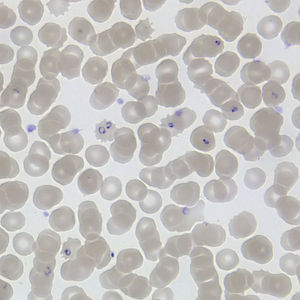You’ve seen the instructions–take a quart of warm water, disolve a couple of spoons of salt into it and drink it as quickly as possible. Presto! Thrity minutes later, you’re in a mad dash for the bathroom to purge “toxins”, “parasites” and “impurities” via a very, very watery stool.
It’s called a salt water flush and it’s one of the hottest trends in do-it-yourself medicine. But is a salt water flush safe? Could a salt water flush be dangerous?
Here’s what those websites don’t tell you about the practice known as a salt water flush.
You’re Not “Cleansing” Your Body–You’re Simply Loading It With Sodium
A single teaspoon of salt contains around 2300 mg of sodium. That’s more than most doctors recommend you consume over the course of an entire day. But a salt water flush typically doesn’t just use one teaspoon–most “flushers” recommend two spoonfulls or more. That means that you’re asking your body to process–in a relatively short span of time–more than twice as much sodium as you would normally eat in every meal of your day combined.
The diarrhea you experience as a result of a salt water flush isn’t evidence of your body’s attempt to rid itself of parasites, pollutants and toxic buildup. Your body is simply trying to purge itself of excess sodium as quickly as possible.
Salt Water Flushing Isn’t “Natural”
Dr. Andrew Weil stops short of calling salt water flushing dangerous, but in a recent Q&A; segment on his website he expressed concern over the amount of sodium consumed during a flush. And Dr. Weil also reminds his clients that your body does a fairly good job of “detoxing” all by itself. Contrary to claims made on websites, blogs and discussion forums around the ‘net, you don’t need to subject your body to such an extreme experience to be healthy.
Potential Long-Term Dangerous of Salt Water Flushes
While your body needs some sodium to function properly, most Americans get more sodium then they actually need. Excessive sodium intake has been linked to the development of kidney stones, high blood pressure and other health problems.
To understand the potential dangerous of a salt water flush, it’s important to understand how your kidneys deal with sodium. Your kidneys act as the sodium regulators of your body. What effect do you think dumping a large amount of salt into your system will have on those delicate organs?
Also, it’s important to remember that when your kidneys can’t eliminate sodium quckly enough, the sodium begins to accumulate in your blood. Sodium in your blood attracts and holds water, effectively “thickening” your blood. This means that your heart has to work harder and your blood pressure rises.
Some salt water flush advocates claim that the ratio of salt to water is so perfectly balanced that your body isn’t able to absorb the sodium. But neither they nor the author who first popularized this technique offer any proof that this is true or any scientific explanation for how it could possibly work. So, after looking at both sides of this argument, does salt water flushing still sound like a healthy way to detox to you?
Studies & Opinions Referenced in this Article:
National Kidney Foundation. (2006). Clinical Practice Guidelines for Peritoneal Dialysis Adequacy.
Weil, A. (2007). Sea-Salt Flush: What’s the Best Cleansing Regime? Q & A Library, DrWeil.com
American Heart Association. (2007). Sodium.
Jackson Siegelbaum Gastroenterology. (2006). Kidney Stone Diet.





